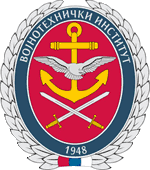|
REPUBLIC OF SERBIA MINISTRY OF DEFENCE
MINISTRY OF DEFENCE Material Resources Sector Defensive Technologies Department
|
ZORAN FILIPOVIĆ Lola Institute, Belgrade,zoran.filipovic@li.rs VLADIMIR KVRGIĆ Lola Institute, Belgrade,vladimir.kvrgić@li.rs DRAGOLJUB VUJIĆ Military Technical Institute, Belgrade, dragoljub.vujic@vti.vs.rs
Abstract: Design and implementation of the Flight Test Instrumentation Systems (FTI) is very important for successful evaluation the testing prototype of aircraft. The configuration of FTI System is based on the General Plan of Testing of any new aircraft (or significant improvement to an existing aircraft). The system represents a fully integrated approach to flight test systems which addresses the end-to-end requirements from airborne data acquisition and real time flight monitoring through aircraft performance and stability/control analysis. Implementtation of wireless sensor networks (WSNs) communication within airborne FTI configuration or aircraft structural health monitoring system, introduces a number of challenges such as guaranteeing reliable transfer of the sensor data and time synchronization of the remote nodes. Special attention has given on the use of Micro-Electro-Mechanical Systems (MEMS) and Surface Acoustic Wave (SAW) sensors technology. This paper addresses some aspects of WSNs acquisition, the associated challenges and discusses approaches and solutions to these problems. Keywords: Flight Test Instrumentation, wireless sensor networks, surface acoustic wave sensors, micro-electro-mechanical systems, sensor node.
|
|||||
|
||||||

